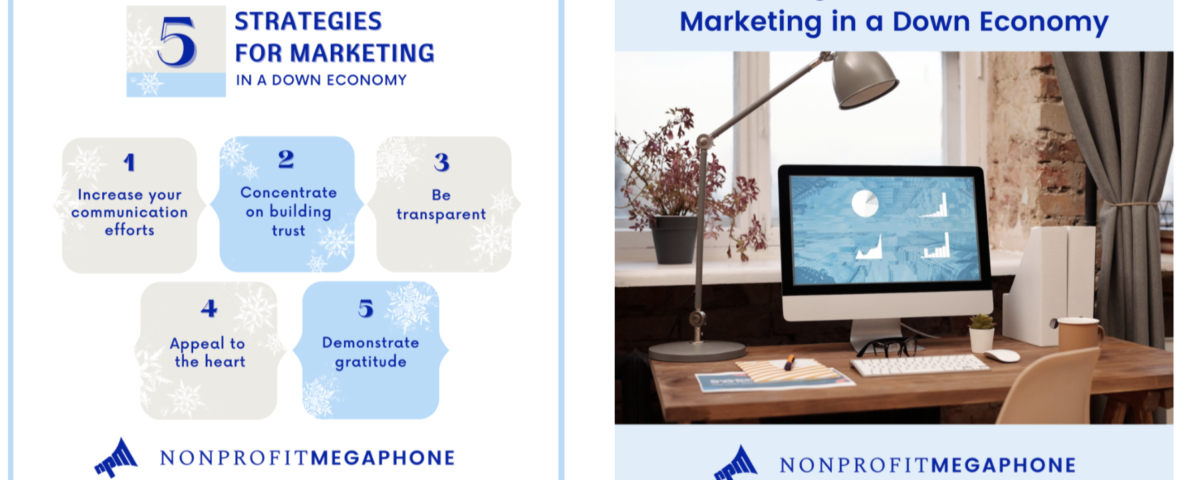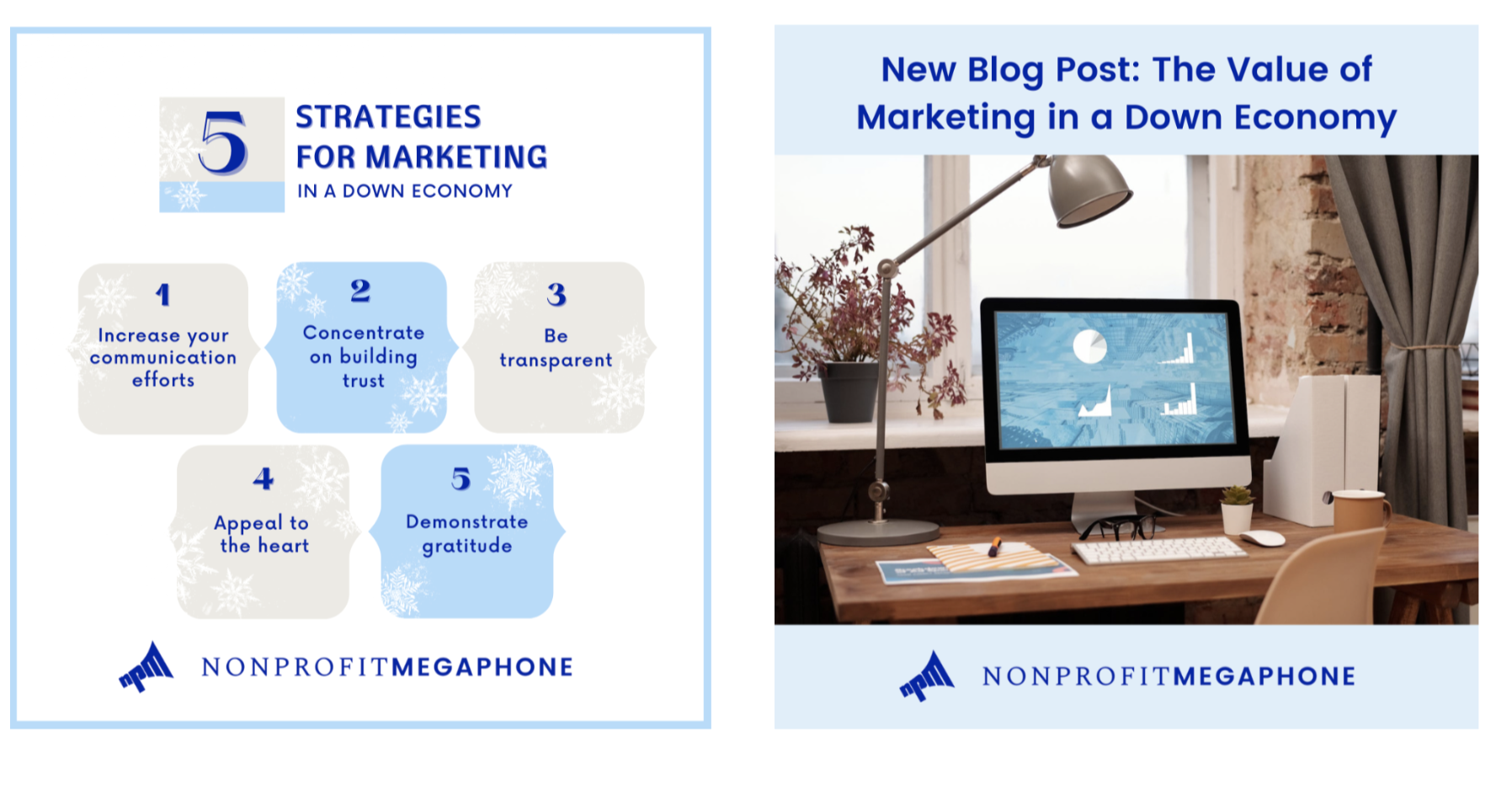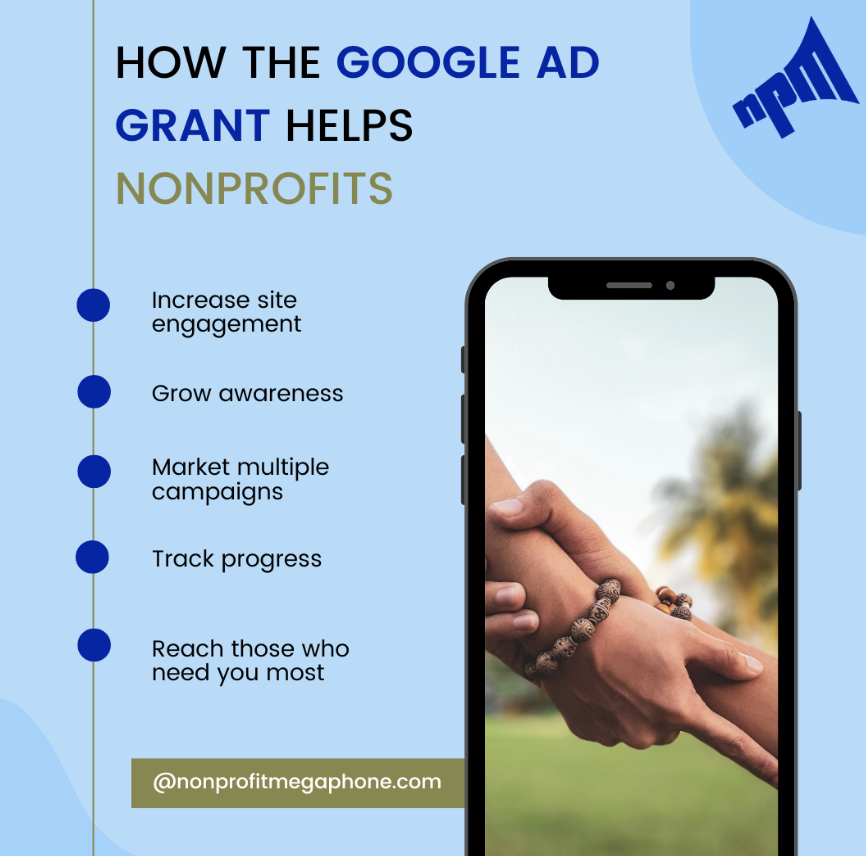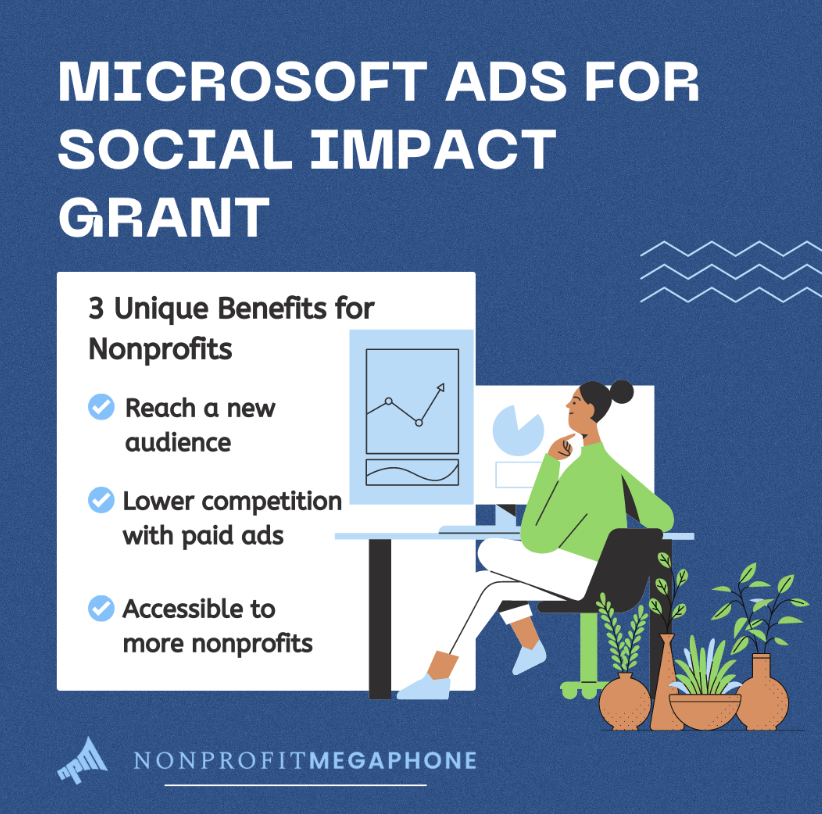
Gravyty Raise – If I Only Had a Brain – Donor Software
January 2, 2023
[PODCAST] Things to Know About Your Nonprofit Brand Promise
January 7, 20233 Ways for Nonprofits to Find New Supporters in 2023

3 Ways for Nonprofits to Find New Supporters in 2023
As we head into this year, many of us are still navigating through recent economic changes and new marketing trends. We see both a shadow of uncertainty from inflation and a ray of light as digital marketing methods become more effective. As a result, you may evaluate trends to find the most effective ways to gain new supporters.
We’ve compiled a few tips for growing your donor and volunteer list this year. These may seem simple but stay with us as we explain how to implement them best.
Your nonprofit can find new supporters in 2023 by incorporating these three methods:
- Diversify your content.
- Broaden your sources of help.
- Grow your audience with Ad Grants.
1. Diversify Your Content
User-generated Content (UGC)
According to Nosto, “79 percent of people say user-generated content highly impacts their purchasing decisions.” While finding donors and volunteers differs from finding buyers, UGC demonstrates nonprofit impact.
As you’ve likely heard, stories move people. Fortunately, nonprofits have some of the best stories to tell.
For example, Solar Sister utilizes UGC to share its organization’s impact on so many lives. This nonprofit empowers women with clean energy entrepreneurship skills and products. Since at least 600 million people in sub-Saharan Africa live without electricity, Solar Sister’s efforts help both women entrepreneurs and countless families. Their story from Nyakno is inspiring.
By allowing those you help to tell their stories, you accomplish the following:
- Spread awareness of a problem AND your nonprofit’s solution
- Show potential donors your impact rather than simply “telling” them
- Personalize the individuals that the donors and volunteers help
- Encourage those who need you most to reach out
Share Videos and Infographics
By sharing visual content, you can relay your message in faster ways that are more consistent with your audience’s needs. Since time is a precious resource, your viewers will appreciate shorter content and bite-sized information.
You can present this content on social media or embed it in your blog posts. Think of videos and infographics as the visual stories you want to tell about essential issues, your impact, and how your supporters made this possible. Sharing infographics and videos increases the likelihood that you’ll get engagement on your content. This engagement can eventually lead to website visits, donations, memberships, and volunteer sign-ups.
Here is a quick example of how effective infographics can be. These Instagram posts are derived from our blog article. We included a link to the whole article in each caption.
As you can see, the first post ensures that you receive a bit of information even if you don’t have time to read our full blog post.

Did it take much longer to read the first post compared to the second?
While we’d all love for audiences to read every blog post, they need to have the option to absorb the short version too. This way, it is up to viewers whether or not they decide to visit the blog and read more. By presenting these options, you give your audience autonomy and demonstrate consideration of their time.
Videos are an increasingly valuable form of content to share as well. They can evoke emotion, entertain, and educate. You can share videos as featured content on your landing pages, blog posts, and social media.
For social media locations that are strictly limited to video, you can reach audiences that otherwise would not have found your nonprofit. This includes Instagram Reels, TikTok, YouTube Shorts, Facebook Reels, and longer YouTube videos.
Volunteer Newsletters
If you haven’t tried sharing volunteer newsletters before, these can show appreciation for your volunteers and encourage more people to donate their time. It can help demonstrate impact with your general audience.
There are a few places to consider sharing volunteer newsletters and purposes for them as well. First and foremost, share them via email with your current volunteers. Highlight specific impacts individuals or groups made over the past month or quarter. Speak to the dedication of your volunteers. You can include a personal story if one of them would like to share. These newsletters help build a community and validate efforts. It can solidify volunteers’ decisions to continue committing their time.
Secondly, you can share volunteer newsletters on your social media channels. For Instagram, you could create a collage of meaningful pictures with a gratitude-themed caption and share the newsletter link in your bio (Linktree). You can also share Reels or TikToks depicting your volunteer impact.
On other platforms, share the entire newsletter, sections, or videos. For example, LinkedIn allows you to publish full articles and newsletters on the platform (Click “write an article” and then “create a newsletter”). By sharing your volunteer newsletters on social media, you can build interest among potential volunteers in your audience.
Donor Impact Newsletters
Another area where newsletters are beneficial is with your donors. Unless they’ve limited communication, you should email these directly to them. It’s always a good idea to share nonprofit impact with donors! In fact, the most common reason donors stop giving is too frequent solicitations without communication of impact.
Demonstrate how their contribution has changed lives and has enabled your nonprofit to continue this essential work. Additionally, you can include announcements of events, important milestones, and personal stories. You can also share them on social media to increase donor retention and encourage new donors.
Won’t these newsletters take too much time?
The time commitment involved with creating both types of newsletters doesn’t have to be extensive. You may be able to repurpose content from each, “piggy-backing” off of content you’ve already created. This is especially true for instances where your volunteer and donor impact intersect.
For example, let’s say a group of volunteers runs a highly successful dog adoption event, and the space is rented with donated funds. Or, you have volunteers transporting rescue pets to veterinary clinics, and donations fund this medical care. In these situations, you can write newsletter content celebrating the overall impact and personalize the wording to thank each group. Explain how their donations or voluntary efforts made this possible.
2. Broaden Your Sources of Help
Consider these examples of non-monetary support that can be impactful for your organization:
Previous donors
While monetary contributions are vital, only some can donate funds. However, people still look for ways to donate their time or tell their friends about your organization’s essential work.
Previous donors can share your information with their friends and family. Some may no longer be able to donate but might look for other opportunities to stay involved. Let them know that you appreciate everything they have given. Welcome them to share posts about your organization. Unless they prefer to stop communication, continue to include the previous donor as a valued partner in your mission.
Internships
Offering internships for college credit or work experience is an excellent way for you to get help with your cause. This also allows a student, career-changer, or entry-level associate to learn from your dedicated team and gain resume experience.
Interns can help with content creation, virtual assistance, fundraising, marketing, and other tasks. While some students search for paid opportunities, remote internships (paid and unpaid) have become increasingly competitive for them. Furthermore, numerous millennials and Gen Zs say their dream job would be nonprofit work. Many of us remember being a student and wishing someone would give us a chance!
Keep in mind that interns want to learn, make an impact, and gain valuable experience for their resumes. They may also seek paid positions within your organization. You can increase your applicant pool by offering these internships on a part-time basis that an intern could manage alongside other responsibilities. Remember that many students or career changers must continue their paid work to make ends meet.
Remote Volunteers
Often underestimated, remote volunteers can help with your mission in more ways than you might realize. Of course, this depends on their assigned tasks. While a generous pet foster or kennel helper is an in-person commitment, remote volunteers can create an impact in other ways.
They can assist with virtual events, content writing, Canva design, photo & video editing, T-shirt art, and various office tasks. Remote volunteers can also teach your team a specialized skill they may have. Potential volunteers often want to make a difference, learn new skills, and be part of a community. You may be surprised by the generosity and willingness to help from people that are states away.
3. Grow Your Audience With Ad Grants
The Google Ad Grant and Microsoft Ads For Social Impact Grants are free advertising for nonprofits. By displaying ads on popular search engines, your nonprofit can reach more donors and volunteers.
Google Ad Grant
Google provides $10,000 in monthly ad spend with its grant for eligible nonprofits. The ads are on the Google search engine, which is the largest in the world. Nonprofits can spend the entire amount monthly or only as much as needed. Then, the following month, they receive another 10k in ad spend. If your nonprofit already has the Google Ad Grant, ensure you get the most out of this free advertising.
Understandably, you may be curious how much of a difference the Google Ad Grant can make. We encourage you to look at Google’s success stories to learn more about how the Google Ad Grant has drastically increased nonprofit impact. Check out this resource for guidance on the technicalities of Google Grant success and management.

Microsoft Ads for Social Impact Grant
This new ad grant has only been available to nonprofits since the summer of 2022. The Microsoft Ad Grant has fewer website requirements, making it an option for nonprofits with less content on their site.
The Microsoft Ads for Social Impact Grant gives eligible nonprofits $3,000 monthly ad spend. These ads are on the Microsoft Search Network (Bing, Yahoo, AOL) and Microsoft Audience Network (outlook.com, MSN, Microsoft Edge, Ecosia).
While the Microsoft Network makes up a smaller portion of the US search market than Google, you can still reach 47 million searchers that are not on Google. Additionally, Microsoft’s audience is notoriously supportive of nonprofits. See a few unique benefits of the Microsoft Grant below.

Using Both the Google Ad and Microsoft for Social Impact Grants
You’re likely to miss out on additional supporters if you aren’t extending your reach by utilizing both of these nonprofit ad grants. Understandably, you might ask how beneficial it is to have both grants. Some nonprofits have already added both to their marketing strategy. They’ve been very pleased with the outcome.
For example, the YWCA USA more than tripled its clicks by utilizing both the Google Grant and Microsoft Ads for Social Impact. They increased their total number of ad clicks from 3,420 to 11,475 in two months. Additionally, this organization had more than 432,000 ad impressions within two months by effectively and simultaneously managing both grants.
While professional management is not required, this takes work off your plate and helps you get better results. Connect with us if you have any questions or need some help!
Conclusion
Now that you’ve read our recommendations for 2023 marketing for supporters, we hope that you have found areas of opportunity unique to your nonprofit. While we see the value in the totality of these methods, we recognize a few key points from our own work with successful nonprofits. Each organization has its talents, resources, and niche. It’s important to do the necessary research to discover how your nonprofit fits into the philanthropic goals of your target volunteers and donors. We believe that this insight into your audiences and their goals will continue to be essential for growing their support.
Our goal at Nonprofit Megaphone is to amplify nonprofit missions and equip nonprofits to thrive. If you find value in regular marketing tips and tricks, we encourage you to follow us and check out our blog. You can also subscribe to our monthly newsletter, where we deliver one of our top blog posts and a summary of content tips. Thank you for reading!
The post 3 Ways for Nonprofits to Find New Supporters in 2023 appeared first on Nonprofit Hub.
